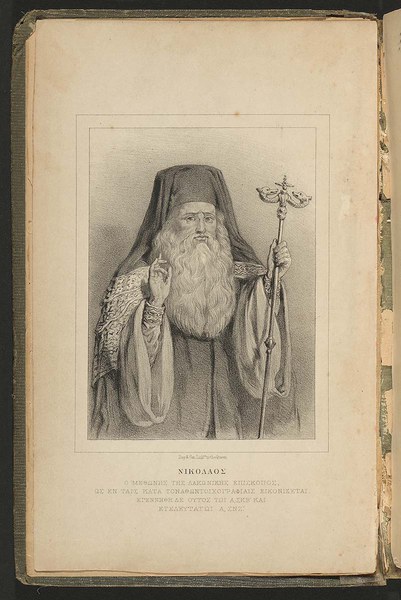
Byzantine Theology and Liturgy
The early tradition of theology in the Greek-speaking world, synthesized in the writings of John of Damascus (d. 749), developed in patristic sources and conciliar decisions that in turn provided the framework in which the later tradition was elaborated. From the fourth to the eighth century, a series of church councils responded to heresy and defined the evolving church teachings, while also alienating large numbers of Syriac and Egyptian Christians (so-called Nestorians and Monophysites). Significant early theologians included Eusebius of Caesaria, Epiphanius of Salamis, Gregory of Nazianzus, Basil of Caesarea, John Chrysostom, Cyril of Alexandria, and Dionysius the Areopagite. John Climacus was a major figure at the time of the Islamic conquests, and in the wake of these conquests the influential Apocalypse of Pseudo-Methodius was written.
Though the second Council of Nicaea (787), which approved the veneration of icons, marked the end of the first stage of Iconoclasm, it was revived in the early ninth century. Opposing Iconoclasm in this period, Theodore the Studite also exerted a lasting influence on Byzantine monasticism, whose later renewal in the early eleventh century Symeon the New Theologian influenced. Later in the ninth century, during the patriarchate of Photios, the preeminent intellectual of his time, a brief schism with Rome foreshadowed deeper and more persistent divisions between the Greek and Latin churches that would find dramatic expression in 1054, when Patriarch Michael Keroularios and the papal legate Cardinal Humbert exchanged formal excommunications. Keroularios’s friend Michael Psellos did much to revive the knowledge of ancient philosophy and rhetoric. His successor John Italos, however, was condemned for heresy in 1082, the first of many trials during the Komnenian period. The polemical writings of Nicholas of Methone are typical of the theological concerns of the late Komnenian era.
The last two centuries of the Byzantine Empire involved significant intellectual exchange between the East and the West, as testified by the translations of the Kydones brothers, which brought Thomas Aquinas to widespread attention in the East, and the fifteenth-century Council of Florence. The most significant theological development of this period was the Hesychast controversy, in which Gregory Palamas defended the methods of prayer of the monks of Mount Athos. After the fall of Byzantium, the Orthodox community persisted under Ottoman rule and adapted to its new circumstances, for example, using Greek characters to write Turkish in Karamanli texts, including theological texts.
In addition to theological treatises and biblical commentaries, Dumbarton Oaks also holds works of theological and devotional poetry by George of Pisidia, John Geometres, and Andrew of Crete, as well as numerous liturgical texts.
Searching for Materials in HOLLIS
In addition to select digitized titles, the Dumbarton Oaks Rare Book Collection holds numerous materials related to Byzantine theology and liturgy. To quickly locate items in HOLLIS, use the “Advanced Search” feature to specify material subject, language, date range, or other criteria. Relevant subjects include the following:
Orthodox Eastern Church -- Liturgy
![Symeōn Theologos Tegilen [i.e. Tenilen] kētap](https://www.doaks.org/resources/rare-books/symeon-theologos-tegilen-ketap/symeon-theologos-tegilen-titlepage-002523387.jpg/@@images/d87595fd-a23a-4209-94f9-287f0ecfec87.jpeg)
